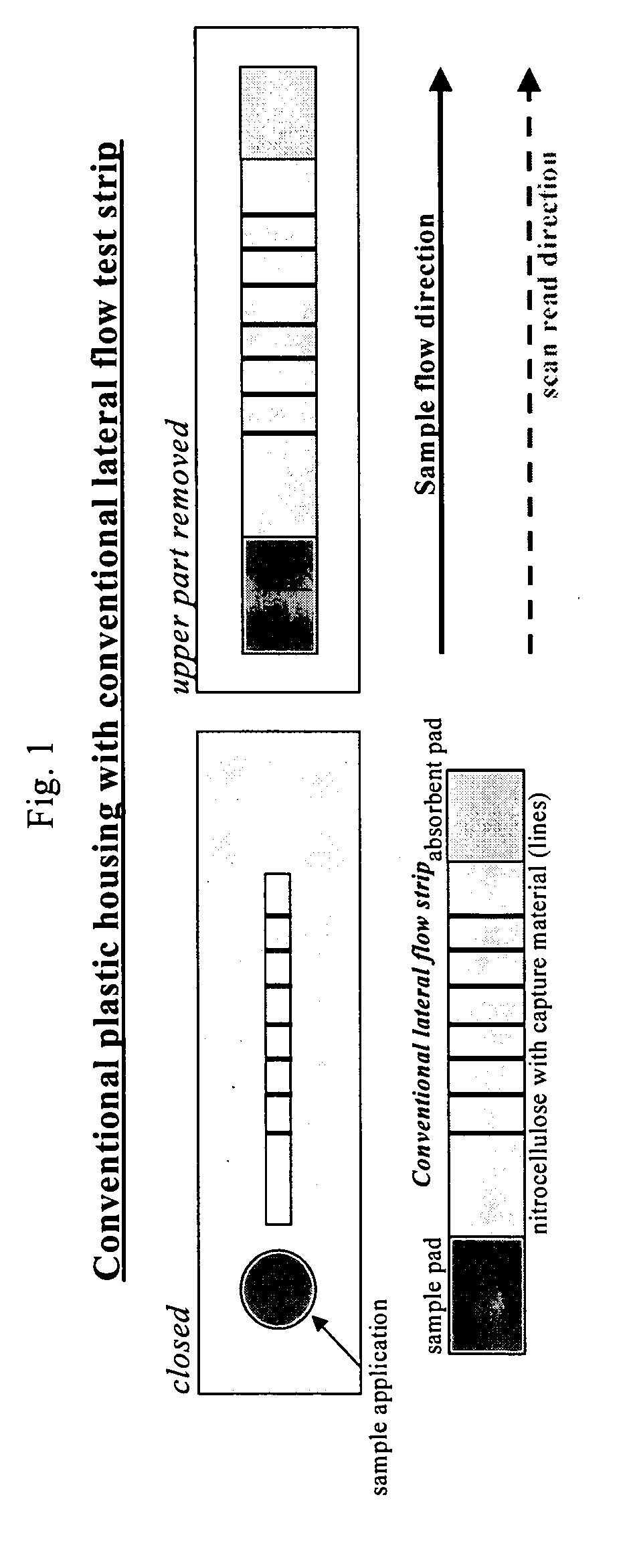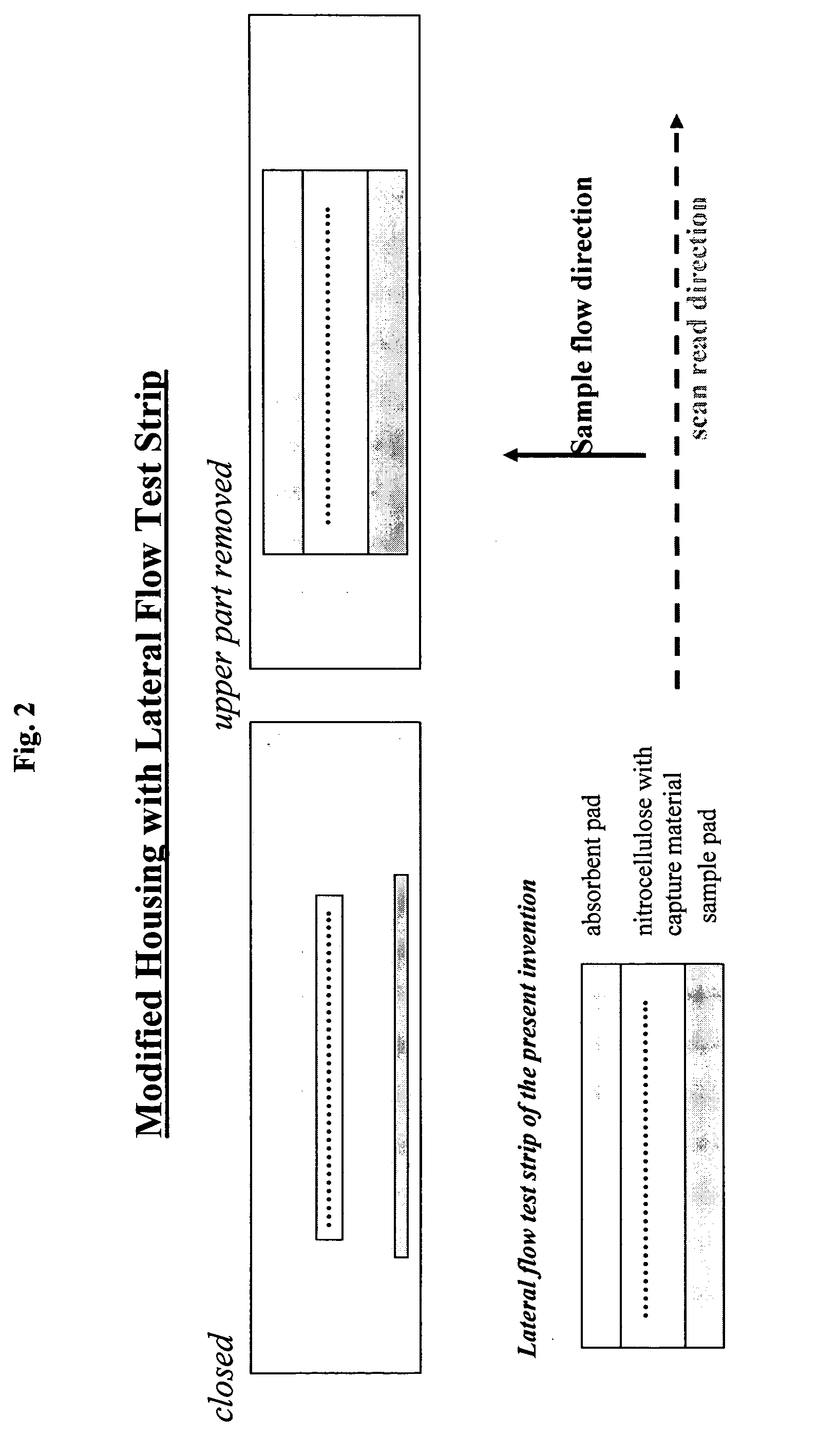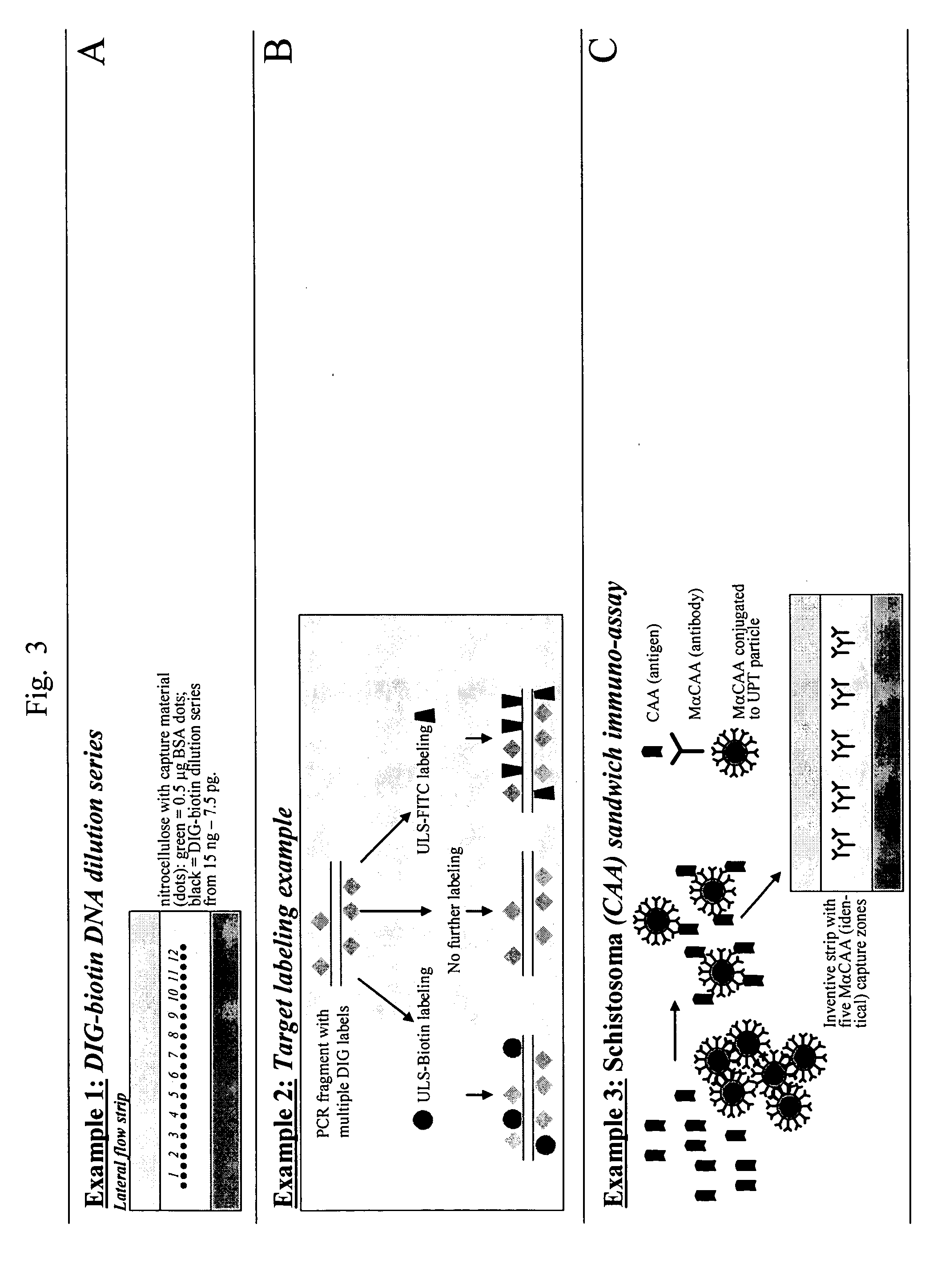Lateral flow assay device with multiple equidistant capture zones
a technology of lateral flow and capture zone, which is applied in the field of assay devices with multiple capture zones, can solve the problems of increasing the complexity of assay, sample and lateral flow capture zone, sample concentration differences, and sample concentration differences
- Summary
- Abstract
- Description
- Claims
- Application Information
AI Technical Summary
Benefits of technology
Problems solved by technology
Method used
Image
Examples
example 1
DIG-Biotin DNA Dilution Series
[0038] A dilution series of DIG-biotin haptenized DNA was mixed with Avidin-D and spotted on the nitrocellulose membrane of conventional strips and inventive strips. The double-stranded DIG-biotin DNA, containing one DIG and one biotin on opposite sites, has a size of 452 bp (base pairs). A dilution series of 12 steps ranking from 15 ng to 7.5 pg (consecutive 2× dilution steps) was mixed with a fixed amount (1 μg) of Avidin-D in PBS (phosphate buffered saline) and incubated at room temperature for 15 minutes. The mixture was spotted on both conventional strips and inventive strips; 0.25 μl was hand-spotted on both types of LF strips [Note that on the conventional strip only the capture zones are located sequentially parallel to the sample pad, and so not all at the same distance from the sample pad]. On the inventive test strip, analyte capture spots were divided from each other by 0.25 μl BSA (bovine serum albumin) (1 μg / μl) spots to prevent cross-con...
example 2
Target Labeling
[0043] A 452 bp HPV fragment was amplified by PCR with primer pair LF65-LF66 (Corstjens et al., Clin Chem., 2001), during amplification DIG-dUTP was incorporated. The resulting multi-DIG labeled DNA fragment (target) was gel purified and divided into three equal parts. One part was an unlabeled control and two parts were labeled; one with a secondary biotin label and another with a secondary FITC label. See FIG. 3B, showing how the target labeling was performed. Biotin and FITC labeling was performed using ULS-biotin and ULS-FITC, respectively, both available from Kreatech Biotechnology, The Netherlands).
[0044] Inventive strips containing different capture zones were prepared by spotting on each strip of the present invention, 1 μl of a 1:10 and 1:50 dilution (in 10 mM Tris pH 8, 1% (v / v) MeOH) of mouse monoclonal antibody samples: α-Biotin, α-CAA, α-DIG and α-FITC. The strips were allowed to dry for 30 minutes at 37° C. The α-CAA antibody preparation was selected r...
example 3
Schistosoma CAA-Sandwich Immunoassay
[0054] Signal reproducibility was tested on an inventive lateral flow test strip prepared with five similar analyte capture spots on one strip. A dilution series to test sensitivity of the CAA-sandwich using the inventive strips was prepared. In a rapid test (FIG. 6, panel A-C) 10 μg, 10 ng and a zero control of CAA antigen were mixed with 500 ng MαCAAPHOS conjugate (in 250 μl SRB). Samples were immediately applied to the inventive lateral flow test strips with five capture zones of MαCAA antibody.
[0055] Results:
[0056] The results of the experiment are shown in FIG. 6. The results show a distinction between the 10 μg and 10 ng sample. Although the results appear to be quantitative, the signals obtained with 10 μg of CAA apparently suffer from the high-dose-hook effect. All duplicate capture zones (5 per strip) are produced approximately the same signal. The small observed differences were most likely caused by pipetting errors, including, for i...
PUM
 Login to View More
Login to View More Abstract
Description
Claims
Application Information
 Login to View More
Login to View More - R&D
- Intellectual Property
- Life Sciences
- Materials
- Tech Scout
- Unparalleled Data Quality
- Higher Quality Content
- 60% Fewer Hallucinations
Browse by: Latest US Patents, China's latest patents, Technical Efficacy Thesaurus, Application Domain, Technology Topic, Popular Technical Reports.
© 2025 PatSnap. All rights reserved.Legal|Privacy policy|Modern Slavery Act Transparency Statement|Sitemap|About US| Contact US: help@patsnap.com



